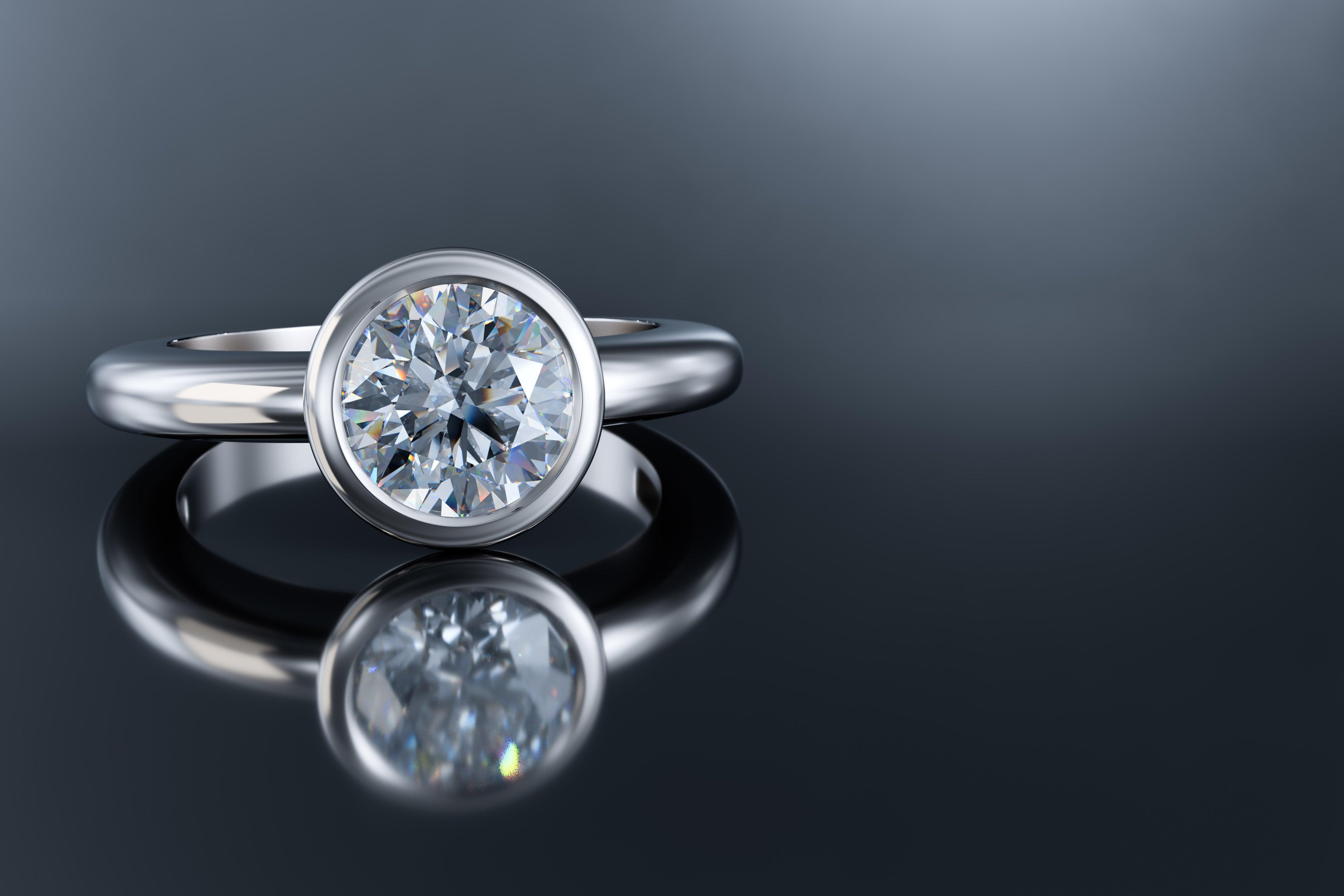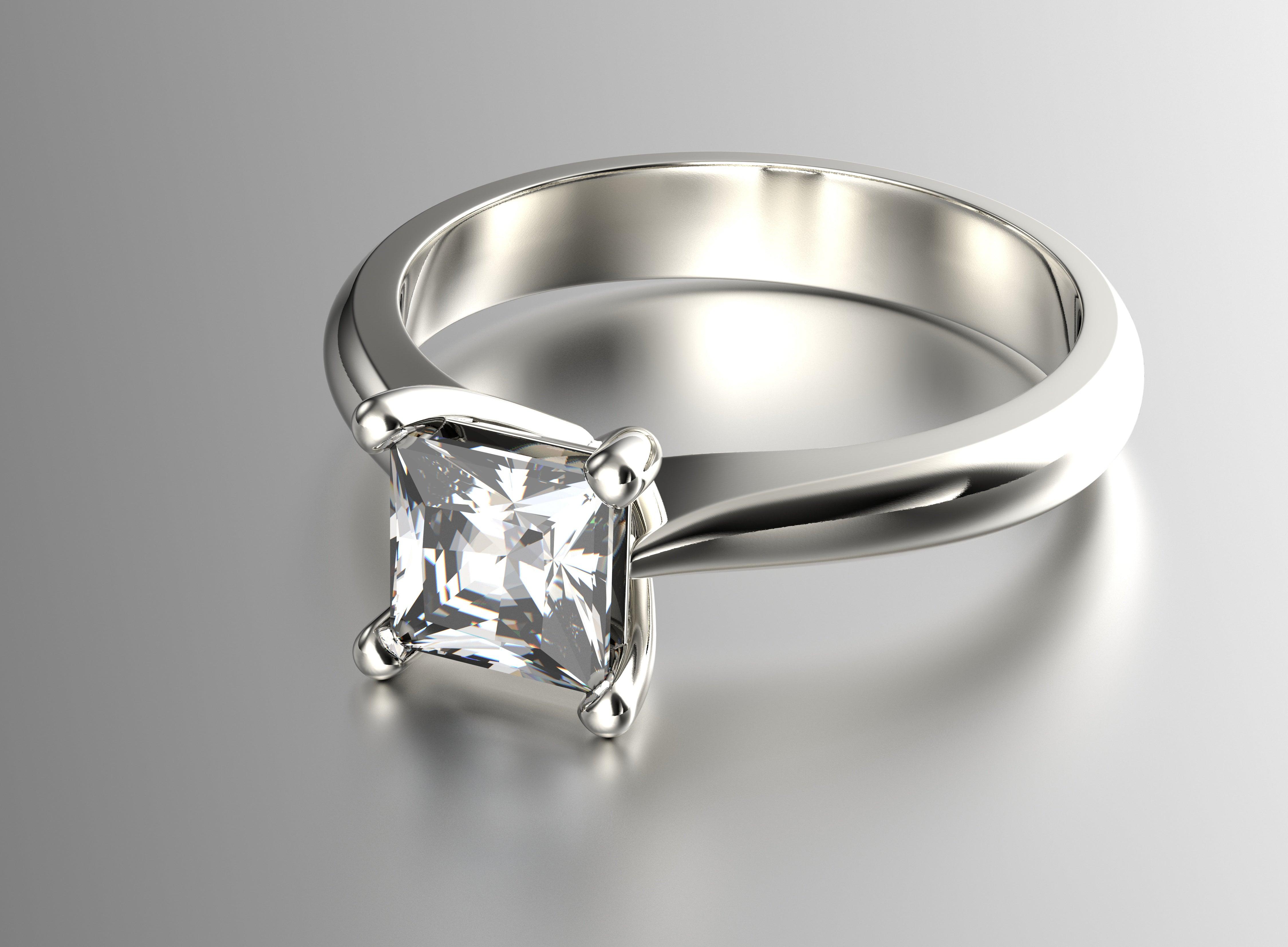
How and Why to Buy Sustainable Round Brilliant Diamonds
Round Brilliant diamonds are one of the most popular choices of diamond shape, especially for engagement rings. They are the most iconic shape diamonds are known for, but it wasn’t always that way, and nor is every round cut diamond equal. In this blog, we help you understand how to choose a Sustainable, Lab-Grown, Round Brilliant Diamond, and some of the fascinating history behind them.
Not Your Grandmother's Diamond
The most common diamond shape is the Round Brilliant cut, accounting for almost 70% of gem diamond sales. It exhibits the diamond's Fire, Brilliance, and Scintillation in a way unattainable by any other cut or shape. That sometimes explosive balance of characteristics mesmerizes audiences worldwide and has become ingrained in our subconscious as the iconic form of the hardest substance on earth.
However many customers at Michael Gabriels are surprised to learn that this “classic” is actually one of the most recent innovations in diamond shapes, and not always the easiest to pick.
Let's take a look at how Round Brilliant Diamonds developed and why that's important in choosing one.
Timeline:
In Ancient times rough, uncut diamonds were set into jewelry as they were found. Octahedral stones were the most prized because they had the most regular and pleasing shape suited for jewelry.
11th -14th century: Whether it began in Arabia, India, or Europe, during this period the first fashioning of diamonds began. Cleaving and bruting, an art that may have begun earlier, became more widely known. Eventually, cutters and polishers who already knew that a diamond can only be cut or scratched by another diamond learned to gather the dust to be used as a polish for the rough natural surface of the stone. They also learned that under the right circumstances a diamond can be fractured in a predetermined way to produce multiple pieces that can be further polished, or simply to remove a portion of the stone of lower quality from the higher quality gem; and that by striking one diamond against another repeatedly small adjustments can be made to its shape.
The Renaissance’s revolution in scientific knowledge and art made its way early to the diamond industry. More than a century before Galileo Galilei was dropping stones off the Leaning Tower of Piza to study gravity, Lodewyk van Bercken had invented the scaif, a revolving disc with diamond dust embedded into the surface onto which a diamond could be polished and ground down. This revolutionary invention allowed cutters to really make their mark on the diamond for the first time. Cut, one of the 4 Cs of a diamond, which is an evaluation of how well a diamond is shaped, began with the scaif. From then on, diamond cutters would be able to alter and change the shape of the stone from its natural origin, and polish it so brightly that blemishes, which before might be masked, could now be easily seen. So Clarity, another one of the 4 Cs, became included in the evaluation of the stone by professionals and buyers. Eventually, diamond polishers would also figure out that how you polished a stone would affect its Color, another one of the 4 Cs. And just to throw it in there, polishing and cutting, by altering the shape, altered the weight, sometimes deliberately- and that brings us to Carat, our 4th C of the 4 Cs, the evaluation of the weight of a diamond. Eventually, some shapes would be invented because, for their Carat weight, more of the diamond would be visible.
As time went on, cutters realized that certain shapes and polishing resulted in more and more brilliant stones with more fire, and eventually, scintillation.
For centuries diamond cutters attempted to perfect diamond polishing and worked their way through various cuts to identify the ideal cut for a round diamond. Even though diamond cutters were experimenting to produce more and more brilliant cuts, they did not understand the structural and chemical makeup of the world's hardest substance, so there was no way they could optimize diamond cutting to promote the optimal amount of brilliance and fire. Moreover, only when cutting and polishing diamonds revealed the true magnificence of the diamond’s optical properties did scintillation become a recognizable feature. You can’t really have scintillation without facets, and the better cut those facets, the more scintillating the stone appears.
Diamond cutters produced many “round” diamonds with varying amounts of success. Some early forms, such as the Rose Cut and Old European Cut are still around today, albeit much less popular now that Round Brilliants are available. Neither of those cuts nor the plethora of other early cut diamonds intended to be “round,” had the balance of angles and facet proportions to produce the fire, scintillation, and brilliance we so commonly associate with Round Brilliant diamonds.
It wasn't until the discovery of diamond crystal structure in 1915 by a father-son team of scientists named Braggs that scientific knowledge was available to optimize a diamond’s optical properties.
Then along came a man named Tolkowsky and the diamond industry never looked back.
Marcel Tolkowsky studied gem grinding and the science behind how diamonds work for his Ph.D. at the University of London. He made a great deal of use out of the Braggs team discovery. While conducting his research he found that diamonds cut too shallow or too deep would lose light out of their sides or bottom, reducing the brilliance and overall light play. By perfecting the angles at which the facets on the diamond were cut, you could optimize the fire, brilliance, and scintillation. In 1919 the Belgian mathematician introduced the world to the Round Brilliant cut diamond. His cutting guidelines have become the standard for how Round Brilliant diamonds are polished, though modern adaptions have perfected that design even more.
The most notable advancement of Tolkowsky’s design was discovered by Japanese diamond cutters Kazumi Okuda, and Kinsaku Yamashita, in the ’70s and 80s. Their research into the light properties of diamonds led them to produce the “Hearts and Arrows” diamond- the most Ideal version of the round cut we have today. This diamond is well known for a unique optical trait: when you view the stone from above you can see a wheel of 8 arrows spreading out from the center of the diamond. When turned over and looked through a special tool you can see a wheel of hearts. So if you are looking for something romantic, a diamond with arrows piercing hearts sounds like a stone cupid himself would have designed.
Lab-Grown Diamonds
The newest innovation in Round Brilliant Diamonds is not a surface-level change, like those previous, but runs deep, into the very core of the stone itself.
For thousands of years, the only source for diamonds were pits in the ground. Mining of diamonds began in India, but that source was running out or very low by the time Van Bercken invented his scaif in 1456. Brazil became a source and continues to provide mined diamonds to the world. And of course, the discovery of diamonds in Africa, and later in Australia, Canada, and Russia, have flooded the world with these once very rare stones. But mined diamonds have been long associated with conflict, social injustices, and environmental damage, and they are increasingly difficult to obtain, especially now that those above factors are starting to be addressed.
In the 1950s scientists working for GE produced diamonds in a laboratory for the first time. Steady advances in technology over the past three-quarters of a century have allowed us to produce gem-quality diamonds of a higher average quality than mined stones, at a fraction of the cost financially, environmentally, and socially. Laboratory-Grown Round Brilliant Diamonds are both the present, and the future.
Michael Gabriel exclusively uses Lab-grown diamonds.
How do you choose a Lab-grown Round Brilliant diamond today?
At Michael Gabriels, all of our diamonds come with a report from IGI, the premier evaluator of lab-grown diamonds in the world. IGI evaluates each diamond for the 4 Cs, cut and shape percentages and ratios, and goes into great depth in that evaluation.
Besides the 4 Cs, there are a few other key elements to keep in mind when reading your IGI report for your Lab-grown Diamond.
Ideally, you want a round brilliant diamond with 57 or 58 facets and no culet,
A ratio of 1-1.01 for a round, symmetrical shape,
A Table % of 56-59,
A Depth % of 60.5-62,
A moderately thin to slightly thick girdle.
Now you should have the necessary knowledge to choose a sustainable, lab-grown diamond. Please don’t hesitate to contact one of our experts at Michael Gabriels with any questions you may have, we are always happy to answer them and work with you to make your sustainable diamond experience an easy one.



